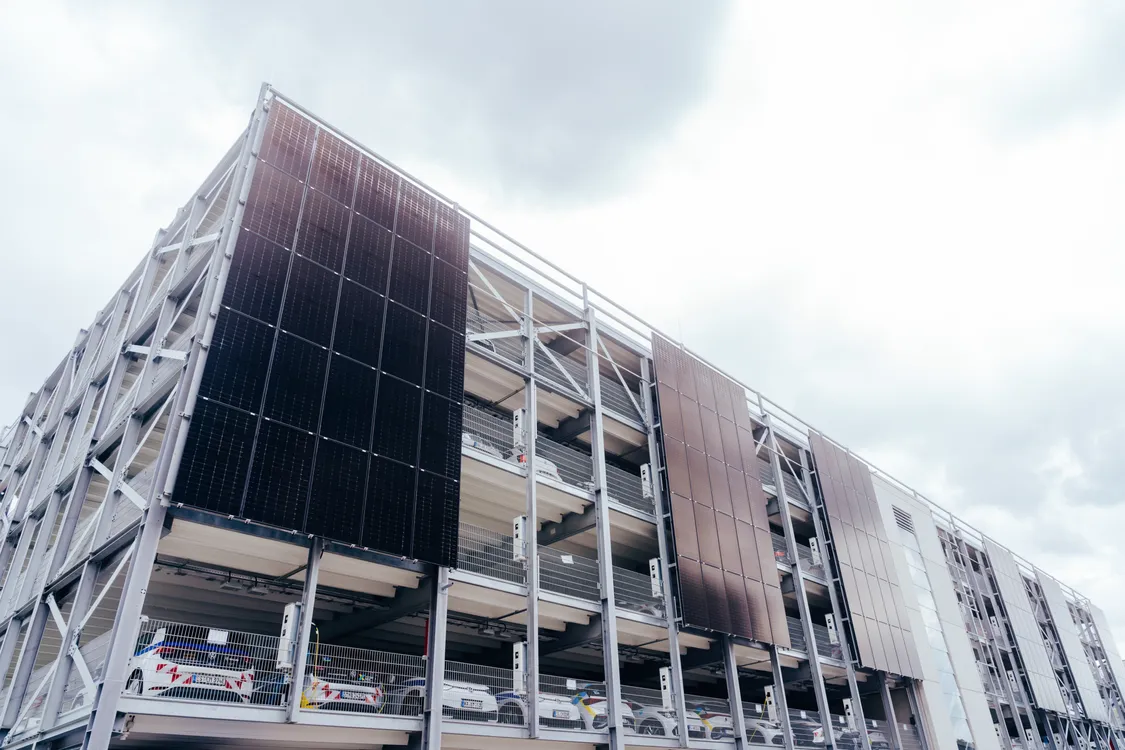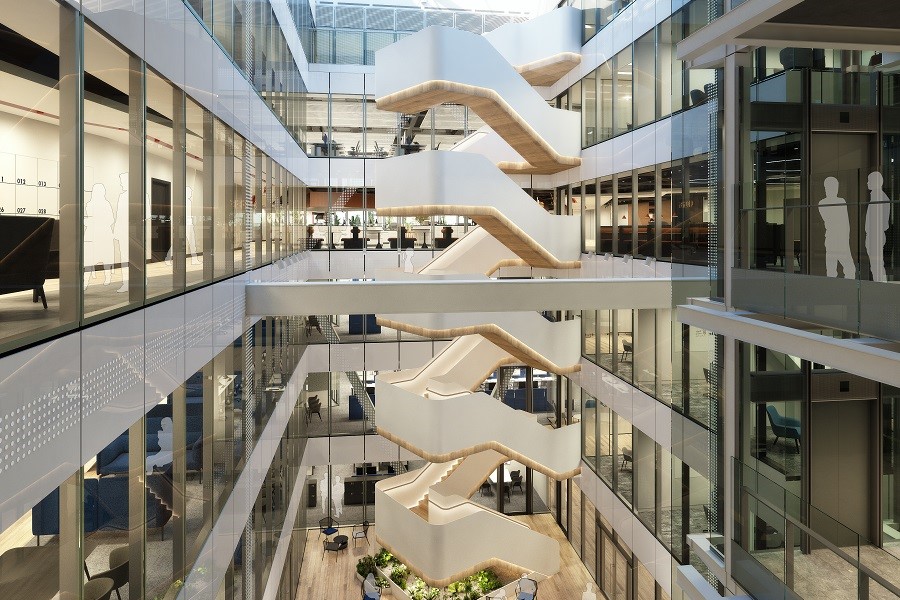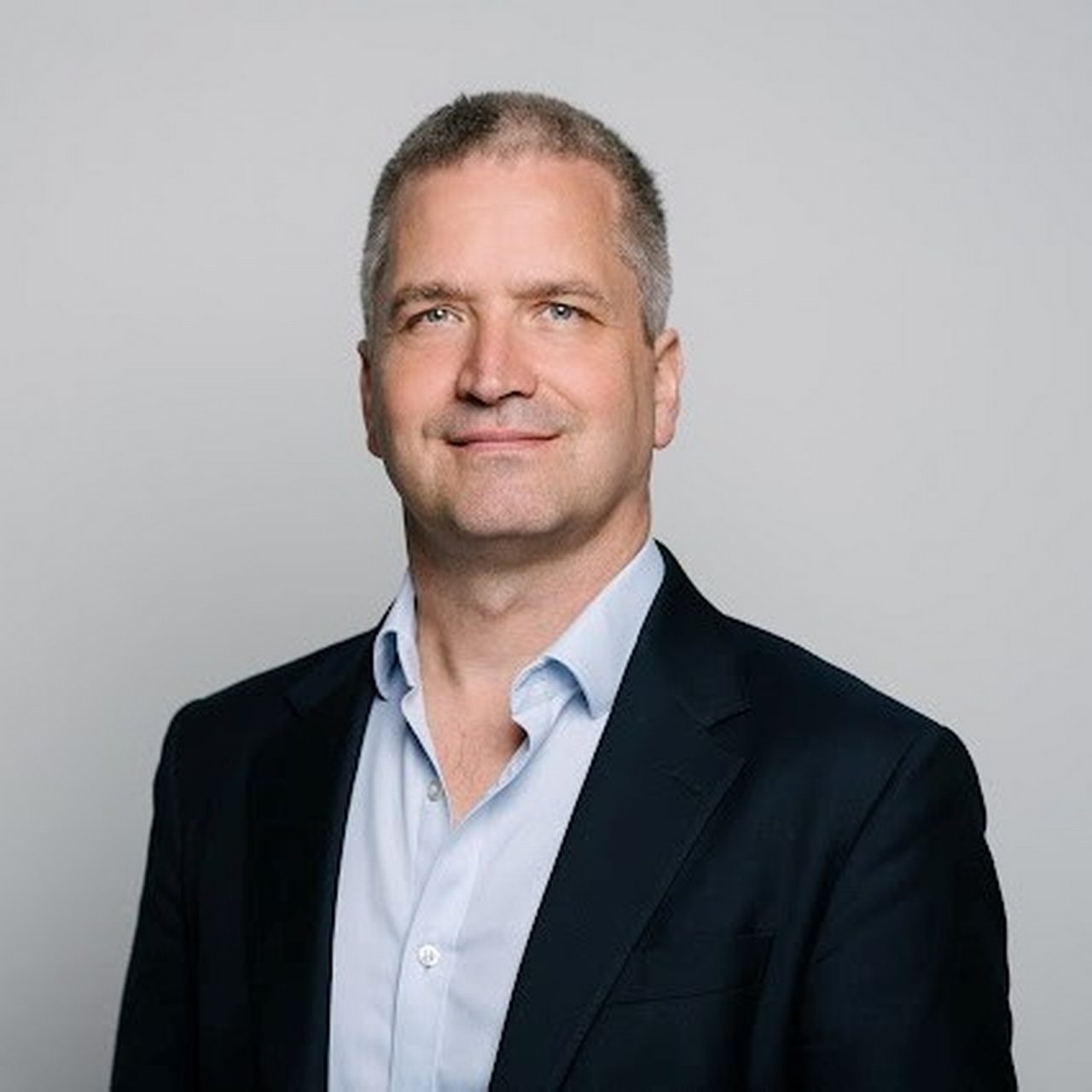
Mushrooms, AI and self-healing concrete: a new building code for climate protection
What sounds like science fiction is already being used today – and not just in labs. This dossier explores how sustainable construction could transform its image from climate culprit to climate champion.
When Philipp Misselwitz talks about the future of construction, he’s very clear that it doesn’t lie in the technical details; it’s about a global shift. The professor at TU Berlin and head of the organisation Bauhaus Erde calls the building sector “the elephant in the climate room”. With around 40 percent of global CO₂ emissions, it’s the single largest source of greenhouse gases.
“In the next 20 years, 2 to 3 billion people worldwide will move to cities. We expect the number of buildings worldwide to double,” says Misselwitz. But precisely because the sector is so vast, it holds enormous potential. At best, it could “even become a healing force for nature,” he envisions.
"The elephant in the climate room"
The construction sector is both a climate culprit and a climate hope. Philipp Misselwitz explains how building with wood, clay and more can store CO₂ instead of releasing it – and why sustainable construction needs a new narrative.

Sustainable building – but how?
Step-by-step renovation: Alf Meyer zur Heyde explains why sustainable building isn’t a luxury – it’s doable, practical, and often surprisingly effective.
What that means in practice becomes clear where people live or work and when they renovate. Alf Meyer zur Heyde, Head of Sustainability at Deutsche Bank’s Private Bank Germany, shares insights into the opportunities and the obstacles: “Most people stumble right at the start. They simply don’t know where to begin.”
His advice: a renovation roadmap: government-funded, structured, and affordable. “With 20 percent effort, you often achieve 80 percent impact.”Sustainability, he says, isn’t a luxury – it’s a matter of having the right partners and doing things in the right order.
With 20 percent effort, you often achieve 80 percent impact.
While homeowners often struggle with the ins and outs of subsidies and technology, Siemens Smart Infrastructure is already operating connected systems. Rainer Haueis, Head of Buildings, describes buildings as active players that communicate with energy providers, transport systems, and industry.
“The greatest compliment for us is when building users don’t even notice everything we’re doing behind the scenes to achieve more energy efficiency, sustainability and comfort.” Sensors, artificial intelligence (AI) and digital twins help optimise operations – not just in offices, but in hospitals, museums and airports. In Berlin’s Siemensstadt, for example, even wastewater heat will soon be used to warm buildings. “The savings pay for the investment. That’s win-win-win,” says Haueis.
The pinnacle of green construction: the best from nature and the lab Building with mushrooms, algae and more
Five surprising materials are redefining what sustainable construction can be: organic, intelligent, even self-healing. The future of building starts with what we build from.
Of course, sustainable construction doesn’t start with building operations; it begins with the choice of building materials. Whether it’s fungal mycelium, algae, rice husks, transparent wood or self-healing concrete: the materials of the future are alive, intelligent and challenge our imagination.
As far back as 2014, the Hy-Fi project in New York showed how mycelium – the root network of fungi – can be shaped into bricks. In Hamburg, the BIQ building features the world’s first algae façade, which captures CO₂ and generates energy. And in the Netherlands, a university in Delft is researching concrete that repairs itself using bacteria.
What may sound like science fiction to the layperson is already being built, tested and scaled. But for these innovations to reach the Global South – where urban growth will be most intense – advocacy is needed.
“We must turn the climate narrative into a development narrative,” says Professor Misselwitz, pointing to projects in Bhutan, Burkina Faso and Indonesia, where bamboo is becoming a high-performance building material.
We must turn the climate narrative into a development narrative.
A project in Cornwall in the UK demonstrates how sustainable construction reshapes social spaces. There, new student housing is not only energy-efficient but also encourages biodiversity. Wildflower meadows, targeted rainwater use and habitats for birds are part of the concept. It’s made possible by a special Deutsche Bank loan, where sustainability performance impacts its terms.
What impressed ESG expert Oyumaa de Jong was how the student housing developer isn’t just focused on new housing developments – “they intend to increase biodiversity across their entire portfolio.”
Even when Deutsche Bank acts as developer, sustainability plays a key role. Since their renovation from 2008 to 2010, the towers in Frankfurt are considered among the most efficient high-rise buildings in the world.
Energy use is down 50 percent; water consumption is down 70 percent and CO₂ emissions are down 90 percent. In London, the new Moorfields 21 building reserves 20 percent of its space for biodiverse habitats – and was named City of London Building of the Year.
All these examples show: sustainable construction is no longer a niche topic. It’s a global lever for climate action, innovation and social transformation.
This What Next dossier explores a range of different approaches and the hurdles that still need to be overcome.
Sustainable home financing over the decades
Deutsche Bank has been providing residential mortgages since 1968. During the 1970s oil crisis, it began advising clients on energy saving concepts like solar panels and heat pumps. Deutsche Bank has been championing sustainable homes over the years.
Thank you for sharing your perspectives!
We asked our LinkedIn community what matters most to them when it comes to sustainable building and living. Affordability and feasibility ranked first (42%), followed by energy efficiency (29%). For a third of respondents, the choice of materials – whether natural, recycled, or even circular – plays a very important role.
This page was published in November 2025

Falk Hartig
… is amazed at how radically construction is reinventing itself – technically, culturally and financially. And he wonders how long it will be before buildings know when they need renovating – and book the contractor themselves?
Recommended content
Responsible Growth | Outlook
Saving energy with networks Saving energy with networks
Smart buildings, connected infrastructure and intelligent data: Rainer Haueis from Siemens Smart Infrastructure explains how digital technology is turning buildings into autonomous actors.
Saving energy with networks Becoming more efficient – togetherResponsible Growth | Video Story
Sustainable student living Sustainable student living
Project Development company UPP is building sustainable student accommodations across the UK, limiting carbon production in the building lifecycle.
Sustainable student living Come inResponsible Growth | Opinion
“The elephant in the climate room” “The elephant in the climate room”
Philipp Misselwitz has a vision: the construction sector can protect the planet rather than harm it. In an interview, he shares how this might work.
“The elephant in the climate room” Unlock expert insights








